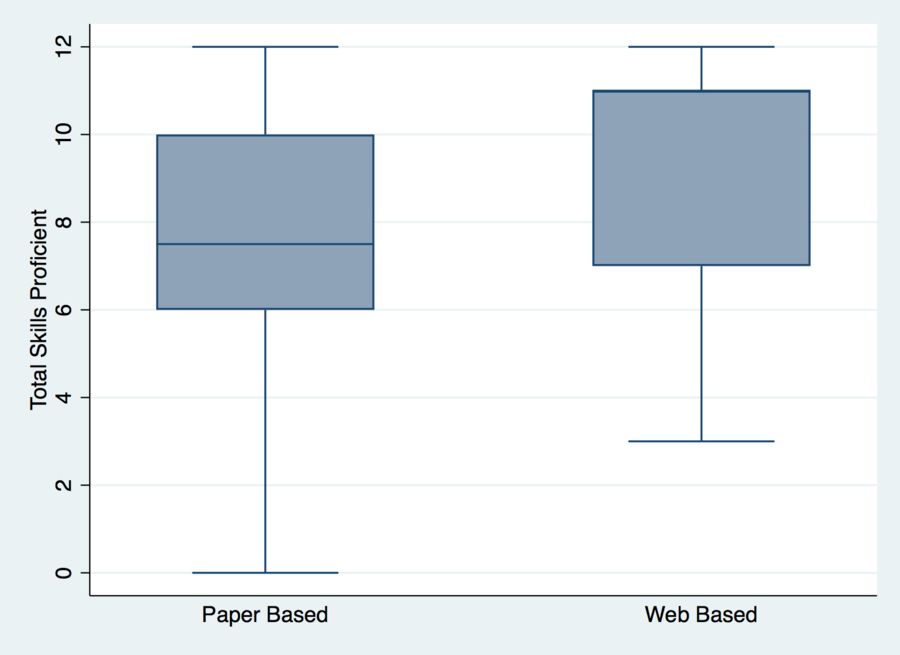PS2-06: HARNESSING TECHNOLOGY: A WEB-BASED TOOL IMPROVES PROFICIENCY IN KNOT-TYING AND SUTURING SKILLS AMONG FOURTH YEAR MEDICAL STUDENTS ENTERING SURGICAL RESIDENCY
Kortney A Robinson, MD, Sarah Duncan, Research Assistant, Charles Parsons, Alok Gupta, Charity Glass, Resident; Beth Israel Deaconess Medical Center
Background: Surgical boot camps have become increasingly popular to prepare fourth year medical students for surgical residency. Even as overall curricula vary greatly across institutions, basic knot tying and suturing skills are the bedrock of many programs. And yet, little is known about ideal teaching modalities to encourage practice and increase proficiency.
Methods: The Surgery Boot Camp at our institution is a four-week elective course. A central theme is the teaching of 12 knot tying and suturing skills. Proficiency is assessed by a score that incorporates total time and errors. For each task, learners watch brief training videos which is followed by a pre-test under faculty supervision. Students practice their skills over four weeks with both independent practice and faculty-supervised sessions. Students are reassessed with a faculty-supervised post-test. This study compares proficiency scores between two cohorts: in 2015-2017, students were given a paper logbook (PL) to track their practice and scores. In 2018, a web-based tool (WBT) was offered which included an automated timer and error tracking; results were visible to all students with an online leaderboard.
Results: All students in 2018 chose to utilize the WBT instead of the PL. We compared these 19 students’ proficiency scores to 38 students from years 2015-2017 with a completed PL. The average number of proficient skills increased from 7.47 (range 0-12) during PL tracking vs. 9.37 (range 3-12) with the WBT (two sample t-test, p=0.027). There was a 2.6-fold increase in learners reaching proficiency in all 12 tasks, although not statistically significant (p=0.15). Every student using the WBT reached at least three proficiency scores.

Discussion: All students chose to use the WBT demonstrating a student preference for technology-enabled learning. Data analysis shows a significant increase in the number of proficient tasks when utilizing the WBT. This may be because student preference for technology led to increased practice. The authors believe the leaderboard also stimulated healthy competition and best explained the findings of improved proficiency. Further granular data analysis will be completed to establish skill learning curves. A smartphone app will also be developed for improved usability and evaluated with resident testing.
